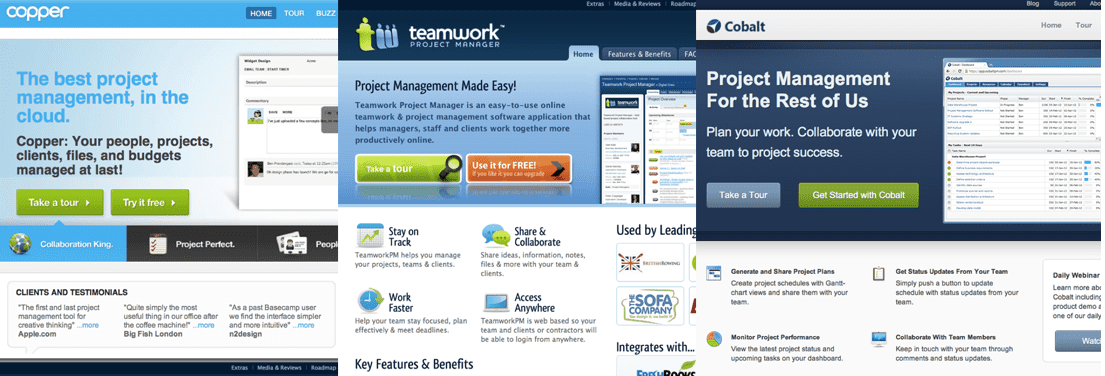
I always, ALWAYS, tell my students (and anyone else who will listen): DON’T START WITH A SAAS.
Start your business with a lil itty bitty product that is easy to start, finish, easy to ship, and easy to keep selling. Something that doesn’t require server maintenance and security updates. A product that won’t ruin anyone’s life if you take a few days (or weeks) (or months) off.
Perhaps a ebook, course, whitepaper, screencast. Or maybe a code library, workshop, template, theme, workbook, calculator / wizard tool, or microsite.
I’ve been accused of “hating software.”
Me, whose first love is interface design. Me, who runs a $700k-a-year SaaS.
FACT: I LOVE software. (And I hate it, but only in the why-aren’t-you-better-you-have-so-much-potential kinda way of wounded lovers everywhere.)
BUT: Regardless of how much I love, care, rant, eat, sleep, and breathe software… there’s no denying it:
Starting with software is fucking dangerous.
It can kill your baby business dead.
Consider this your Saas Surgeon General’s Warning:
- Software takes a long time to build and ship, during which you are more likely to run out of energy, time, motivation or money
- Software will certainly demand skills you don’t have (even if you’re a professional dev, you will have to learn all kinds of things about deployment, security, backups, credit card processing…)
- And you’ll be trying to do all that while learning to market, persuade, sell, and provide support…
- If you’re not a professional dev, outsourcing a software development project is about as risky as taking a grainsack full of cash and lighting it on fire
- Software is slow to sell: Even though people buy a lot of it in general, persuading them to take hours out of their life to switch to your app can be very challenging
- Software is a far more complex business to run (you’ve got onboarding, churn, security, backups, hosting, server updates, uptime, training, bug fixes, feature implementations to deal with… not to mention recurring billing, EULAs, and other crap)
- Software is a more expensive business to start
- Software is a more time consuming business to run
- If your software goes down, that’s really not good
Finally — and most damning — all software is, by default, terrible.
Yes, even the software you will make. Every little thing about software development is stacked against you.
All the design patterns, libraries, tools, hidden assumptions… all the software industry stuff exerts a tremendous pressure on you to create an app that looks and works like every other app.
It’s a million times easier to ship shitty software than good software, to say nothing about great software.
To create really great software is a task of epic proportions
Because really great software isn’t great because the code is clear and the deployment is solid.
Really great software is great because it solves a horribly painful problem for the customer.
The tricky part isn’t the technical stuff… it’s the customer stuff. The messy, squishy, finicky, confusing human stuff.
It’s the easiest thing in the world to sit down and think, “I’m going to make a Better Project Management App!”
And then, because you began with an archetypical example — everybody knows what A Project Management App is like — you are doomed forever by your assumptions.
You end up with an app that’s a virtual carbon-copy of what came before, just… with your little twist.

It’s the easiest thing in the world to create a me-too product, virtually indistinguishable from your so-called ‘competition.’
Suffice to say, buyers aren’t all that interested in Your Little Twist.
Switching apps is risky for the customer. It takes time, money; there’s a learning curve; they have to persuade others to join them; they have to port their data or risk losing it. They may have to justify the time & cost to their boss. And after all that…
Your Little Twist just isn’t worth it.
That’s why so many SaaS apps fail: They’re just not worth it.
And failure is demoralizing as hell. If you can avoid it, why wouldn’t you?
That’s why you should start with an easy win.
“I don’t look to jump over 7-foot bars: I look around for 1-foot bars that I can step over.” – Warren Buffett
And if you’ve already racked up easy wins, and you’re ready to text the next time?
Are you ready to start a SaaS app?
And if you feel you’re ready, how do you know for sure?
Here’s a solid checklist:
- When you’ve got the time, energy, money, and skills to embrace everything that will be required of you to build, ship, and run an app.
- When you’ve got marketing experience under your belt.
- When you’ve mastered that customer stuff.
- When you understand your customer so well, you can sit down and design and build an app that truly kills their painful problems… not just Your Little Twist on an existing (painful) product category.
- When you’ve already got an audience ready and eager to buy from you. Because they trust you. Because you’ve proved to them you understand them.
Tiny Product First doesn’t mean Software Never.
Creating and shipping and selling a tiny product will help you gain the skills you need to successfully design and build software. It’ll build your reputation and trust with your audience. It’ll bring customers to you, to talk to you, who will reveal other problems they have.
And it’ll give you a financial cushion, too.
So, set yourself up to win:
And if you already see yourself in the checklist above? Fantastic! Equip yourself for the endurance race that is software development. Create something that truly helps people. Read my essay, 5 Things I Wish I’d Known Before Starting My SaaS.
Save your little twists for a celebratory old-fashioned.
How do you make your first sale?
Follow our FREE roadmap from $0 to $10k and start your product business one small, achievable win at a time.
When you subscribe, you’ll also get biz advice, design rants, and stories from the trenches once a week (or so). We respect your email privacy.

